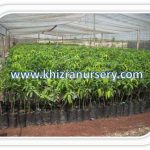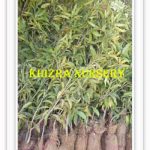Lemon Tree Plants
Botanical Name: Citrus Limon
Its common name is lemon. Having sharp thorns on its twigs. Evergreen and attractive container plant.
The lemon “Citrus limon” is a small evergreen tree. It belongs to Rutaceae family. Commonly it is known as lemon, limon, lime or nimbu. It is native to South Asian countries especially to North Eastern India. The lemon trees are known for their juicy fruits which are used for culinary and non-culinary purposes throughout the world. Its pulp and rind is also considered an important constituent in cooking. The juice has a characteristic sour taste due to the presence of 5% to 6% citric acid. The pH of juice is about 2.2 which also makes it sour. The fruit of lemon is a key ingredient of special drink including, Lemonade and Lemon meringue pie.
Lemon Trees Overview
Lemon trees have an upright growth habit. The tree can reach up to 3-6 m in height and live for many years. Their branches are few, large and have stiff thorns. The tree possess green leaves which are oblong or oval in shape. The flowers are purple-white, occurs in clusters. The lemon fruits are ellipsoid berry, which ripens to become yellow in colour.
Varieties or Cultivars of Lemon Trees
- The “Bonnie Brae” cultivars are mostly grown in San Diego, USA. Their fruits are oblong in shape, thin-skinned, smooth in texture and seedless.
- The “Eureka” cultivar is a common supermarket lemon. It is grown in abundance and is known as “Four season Lemon”. They produces fruits and flowers together throughout the year. It has relatively few seeds and the tree is virtually thornless
- The “Femminello St. Teresa” or “Sorrento” is another cultivar of lemon which is native to Italy. It is traditionally used in making of Limoncello.
- The “Yen Ben” is an Australasian cultivar.
How to propagate Lemon Trees
Lemon trees can be propagated through seeds and budding usually.
- Propagation of Lemon Trees through Seeds
Lemon trees seeds are collected and sown in the soil. The germination take place within 2-3 weeks. Seedlings should be water with care and kept ventilated. They should be grow in the greenhouse for at least three growing seasons. Then, they are planted outdoors in summer.
- Propagation of Lemon Trees through Buddings
Lemon trees budding should be carried out when seedlings have reached a diameter about 6-9 mm. Twigs should be collected from previous trees. These twigs should have well developed buds and then they are joined to rootstock. The collection should be made disease free as it spread diseases and damage trees. These twigs are trimmed to make budsticks which are up to 20-25 cm in length. The easiest way to join the budstick to the rootstock is by T-budding.
A sharp knife is used to make a vertical cut in the stem of rootstock up to 2.5-3.8 cm. A horizontal cut should be made at either the top or the bottom of the vertical cut to produce a “T-shape”. A piece of budstick is inserted into the cut on the rootstock by sliding it under the cut surface. Then both are joined together by wrapping the bud tape. After the union, the tape is moved. The best time to grow lemon plant is during spring but in warm areas, they can be planted throughout the year.
How to care of Lemon Trees
- Lemon plants grows well in well-drained soil with a pH ranges from 6 to 7.5.
- Seedlings need a minimum temperature of 7˚C when they are not hardy.
- Mature tree requires 26-28˚C but are sensitive to cold.
- Lemon trees grow best when placed in full sunlight.
- They require occasional pruning.
- Tallest branch is usually cut back to encourage bushy growth.
- They can tolerate drought conditions.
- Young trees require fertilizer every month in first year.
- Newly planted trees should be provided with water every 3–7 days.
- Young seedlings should be protected from frost by covering them in traps.
Nutritional analysis of Lemon
Lemon trees are planted worldwide as their fruits are rich source of vitamin C. However, other constituents are low in amount including, polyphenols and terpenes. Lemon juice contains citric acid about 47 g/L. This citric acid is nearly twice the citric acid contains in grapefruit juice and about 5 times high than the orange juice.
Uses of Lemon
Lemons are used in variety of foods and drinks. They are frequently used to make marmalades and lemon curds. Lemon rind and slices are used as garnish in many recipes. They are also used to add flavor in roasted food. Lemon zest (the outer rind of fruit) is used to add essence and flavor to rice, puddings and baked food. It is rich in vitamin C which helps the body to fight off infections.
Lemon Juice
Lemon juice is usually used a common summer drink. It is also used as a short-term preservative on certain food products.
Lemon Oil
Lemon oil is extracted from lemon oil-containing cells. A machine is used to break up cells and release oil. This oil is separated or filtered by centrifugation. Lemon oil is used in aromatherapy and may contribute to human relaxation.
Lemon Tree Leaves
The lemon leaves re used to make tea and to cooked seafood.




















Reviews
There are no reviews yet.